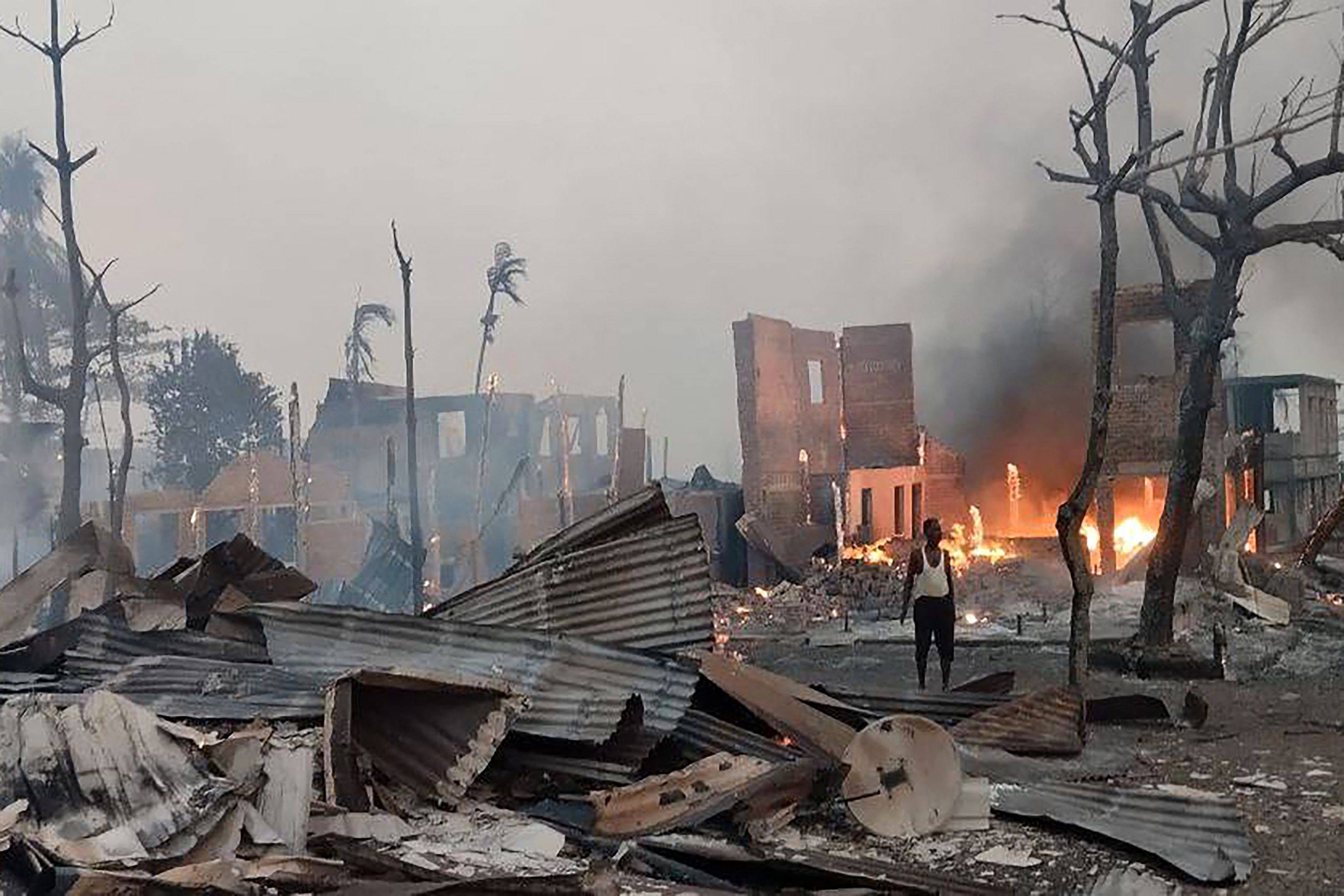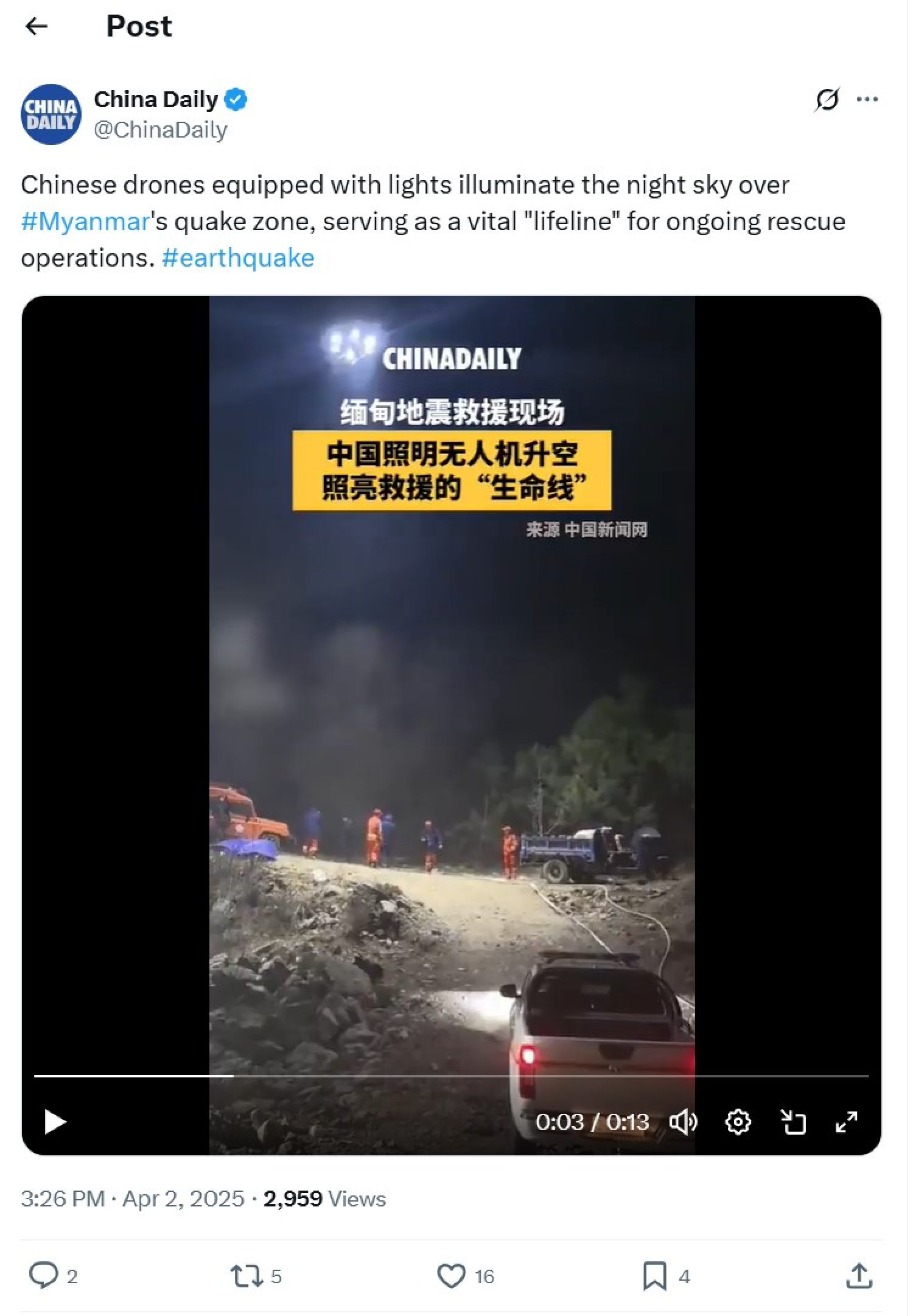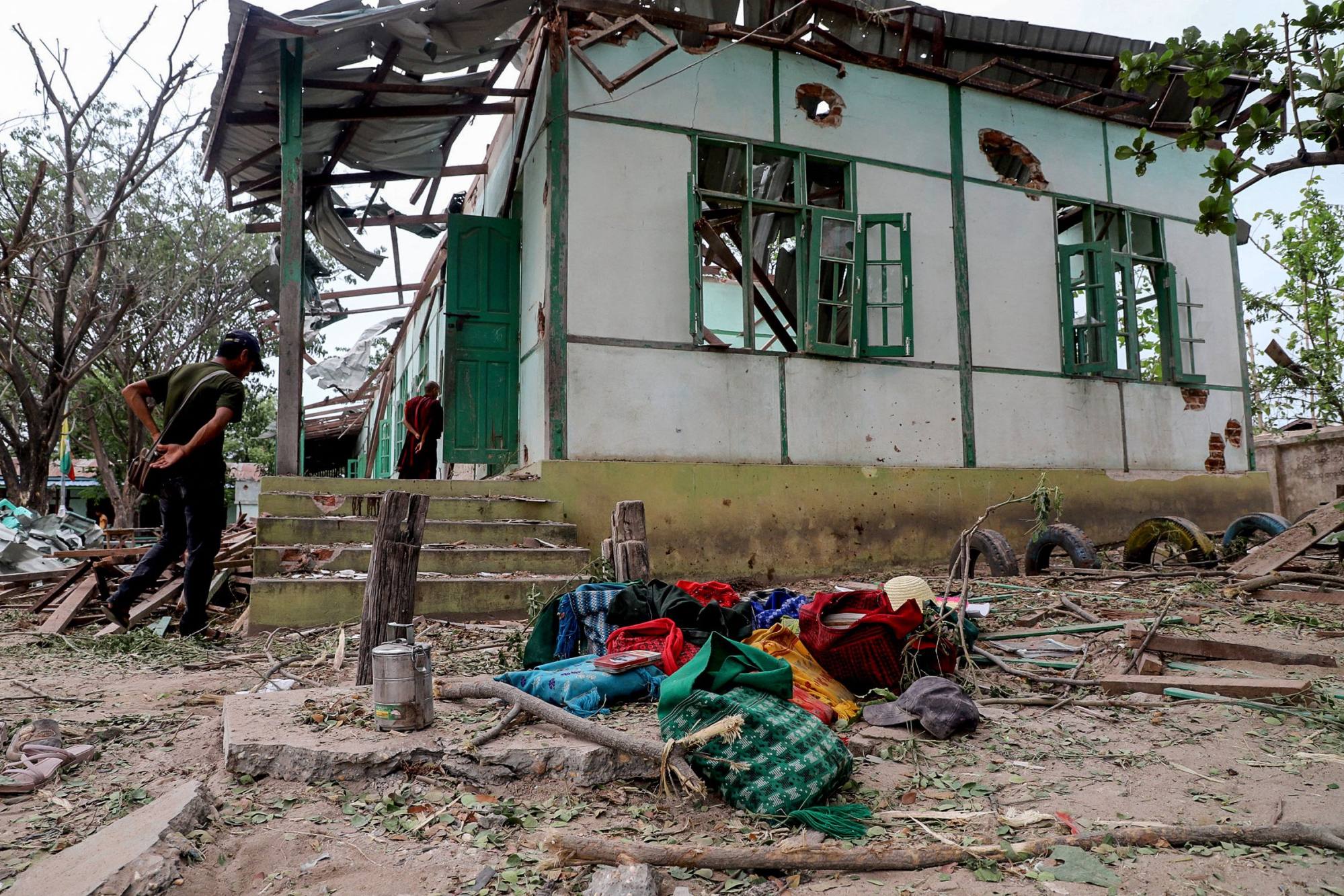Myanmar junta’s drones from China, Russia tilt balance of war against resistance forces
Analysts say the use of advanced drones from China and Russia has resulted in more casualties and slowed down opposition offensives

The Myanmar junta’s growing use of advanced drones – many supplied by China and Russia – has intensified its campaign against resistance forces, shifting the momentum on the battlefield and inflicting rising civilian casualties, analysts say.
While the military’s gains remain limited, experts warn that the deployment of infrared and night-vision-equipped drones has raised the cost of the rebellion, as foreign-made technology bolsters a regime once seen as losing ground on multiple fronts.
Sources on the ground say these foreign-made drones have given the junta a tactical edge in its operations against rebel groups in recent weeks.
Although drones were initially used mainly by the armed opposition, pro-junta Telegram channels have recently shared video footage of military drone strikes targeting rebel positions in Bhamo township, Kachin state.
Radio Free Asia reported in March that the attacks involved drones fitted with either infrared or thermal night vision cameras, resulting in casualties.
Citing officials from the Kachin Independence Army and a local civilian defence unit, the US-funded media outlet’s Burmese-language service said the Myanmar military’s use of these drones in combat had a devastating impact.
“Make no mistake – these advanced drones have gotten more rebels and innocent people killed in villages across the countryside,” said Htwe Htwe Thein, an associate professor of international business at Australia’s Curtin University whose research specialities include Myanmar.
While the junta’s gains had not changed who was winning the war, its “fancy weapons” from China and Russia were now making the resistance fighters’ home-made drones look “primitive” compared to “the superior drones flooding in from abroad”, the Myanmar specialist said.
“Rebels are running out of supplies as they face better-armed soldiers with deeper pockets,” she added.
Since seizing power in a coup in February 2021, Myanmar’s junta has faced rebellion from and waged battles with ethnic armed groups and newly formed resistance militias.
The playing field is “tilting against” the rebellion as “foreign powers prop up the junta with increasingly sophisticated technology”, according to Htwe.
“What was once a revolution powered by determination and ingenuity now faces the cold reality of modern warfare’s resource demands. Whether they can adapt again to these new challenges will determine if Myanmar’s resistance movement survives or slowly fades away.”
Zachary Abuza, a professor at the National War College in Washington who focuses on Southeast Asian politics and security issues, said the junta did not begin to deploy drones in its operations during the first two years of the conflict.
Instead, the drones were used by “tech-savvy youth” who joined the resistance and “brought their skills to the jungle”, Abuza said.
The non-lethal drones caused fear among the military, which he said responded by quickly importing and deploying jammers from China, among other weapons purchases from Russia and Iran.
These foreign drones, however, are “not jerry-rigged hobbyist or crop-dusting” ones, but rather “military-grade drones with higher accuracy, greater lethality, and in some cases night vision and sensing technology”, according to Abuza.
“These drones have now been deployed down to most tactical level units. And there is no doubt that they have increased casualties and slowed the opposition’s offensives,” he said.

On social media, state-owned outlets have highlighted the use of Chinese-made drones during last month’s earthquake in Myanmar.
“Chinese drones equipped with lights illuminate the night sky over Myanmar’s quake zone, serving as a vital ‘lifeline’ for ongoing rescue operations,” China Daily said on X last month.
Analysts say intelligence, surveillance and reconnaissance drones now play a vital role in monitoring opposition-held areas since the junta acquired large numbers of the Russian and Chinese-made aircraft.
“Gathered intelligence is used to strike all manners of targets including administrative offices, opposition officials, clinics and population service centres,” said Morgan Michaels, a research fellow for Southeast Asian security and defence at the International Institute for Strategic Studies.
The junta has also acquired thousands of commercial drones modified to drop explosives, which it calls “drop bombs”, on opposition forces, according to Michaels.
“These weapons are provided to frontline units and opposition forces admit they are causing serious challenges,” he said, adding that drone sales by China “accelerated” after the junta lost control of Lashio last year.
The Battle of Lashio was an offensive to capture the northern Shan city of Lashio that began in July. It was conducted by the Three Brotherhood Alliance – a coalition of the Arakan Army, Myanmar National Democratic Alliance Army and the Ta’ang National Liberation Army – and other resistance forces.

Michaels said there might be little the international community could do to halt weapons transfers from Russia and China.
“It is also important to note that the regime is self-sufficient in the manufacture of most munitions and may also have some capacity for drone assembly,” he added.
While Western countries had expressed concerns, they had done little as the battle “tips further against” the opposition armed groups, Htwe said.
“The people of Myanmar are up against both the army’s guns, planes, and now superior drones and the world’s short attention span,” Htwe said. “They are left wondering if their fight still registers beyond the Burmese people.”
Last week, at least 13 were killed and more than 20 injured in an air strike conducted by the junta on a village in western Myanmar.
A fighter jet bombed Tun Yawai village in Rakhine state with two 500lbs (227kg) bombs, according to The Irrawaddy, a news website run by Burmese exiles in Thailand, citing ethnic armed group Arakan Army spokesman Khaing Thukha.
“Twelve houses were completely destroyed. Thirteen bodies have been found, and more than 20 were injured. Other victims are feared still trapped beneath debris, so the number of casualties can increase,” Khaing Thukha said.
The junta last week killed at least 23 children and two teachers in a school bombing in the northwestern Sagaing Region, the media outlet said.